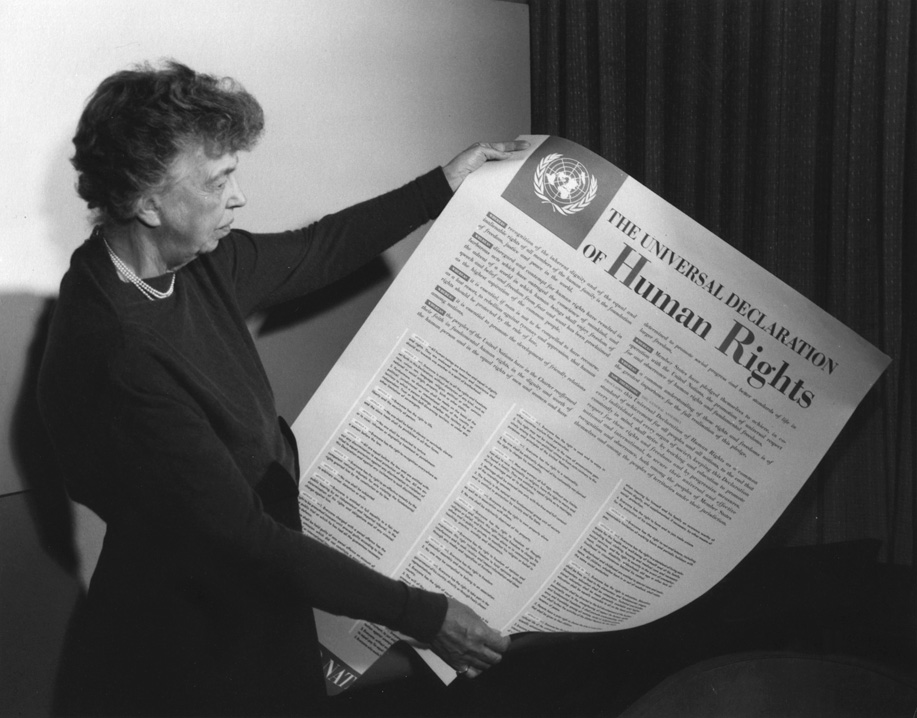During the approximately 12 years that Franklin D. Roosevelt, our nation’s 32nd president, served in the White House, his wife kept a high profile. Eleanor Roosevelt held press conferences and gave speeches in public. She published newspaper and magazine columns and hosted a weekly radio show. During the depression years she traveled all across the country, visiting children in poor neighborhoods and workers in coal mines, advocating for better living and working conditions. During the war years she traveled extensively overseas, visiting troops to help raise morale. She was also outspoken on civil rights and women’s rights.
It should be noted that the job of first lady is not really a job at all. There are no required duties. According to the Associated Press Stylebook, “first lady” is not even a formal title and should not be capitalized in news articles.

Both before and after the White House years, Eleanor Roosevelt had a thriving public career. In the years before FDR’s presidency, Eleanor was active in charitable and philanthropic organizations, in Democratic Party politics, and in various women’s groups. She taught at Todhunter School for Girls in New York City. She also helped run a furniture factory with some of her female companions, with whom she shared a house at Val-Kill, in Hyde Park, New York.
After FDR’s death, President Harry S. Truman appointed Eleanor Roosevelt a delegate to the United Nations, where she worked in various capacities for many years. She chaired a commission on human rights and was instrumental in drafting the U.N.’s Universal Declaration of Human Rights.
Here are some additional notes about Eleanor Roosevelt’s life:
- She was niece of Theodore Roosevelt and was fifth cousin of Franklin D. Roosevelt. Theodore attended the wedding of Eleanor and Franklin in New York City when he was president and gave the bride away. It was St. Patrick’s Day 1905.
- She was born to wealthy parents in 1884 in New York City. She was orphaned at and early age and was raised mostly by her grandmother.
- She was sent to a private all-girls school in England that was taught entirely in French, where she thrived. But her grandmother made her come back to New York a year early to make her social debut as a debutante.
- After Eleanor and Franklin married, they had six children, one of whom died in infancy.
- Franklin had an affair with another woman, and Eleanor found out about it in 1918. The other woman, Lucy Mercer, turned out to be Eleanor’s social secretary! Franklin promised to end the affair, and he and Eleanor stayed married. But from then on they lived separate lives in many respects.
- When Franklin died in 1945 at his home for polio survivors in Warm Springs, Georgia, Eleanor learned that Lucy Mercer (who was now Mrs. Rutherfurd) had been with him. Not only that, Eleanor also learned that the other woman had been visiting FDR in the White House, and everyone including her daughter, Anna, knew about it.
- After FDR’s death Eleanor moved to New York City, first living in an apartment on Washington Square in Greenwich Village. Later she bought a house with her physician and his wife, where the three of them lived together and became companions.
- She wrote more than two dozen books.
- Throughout her life Eleanor Roosevelt had close relationships with several other women, as well as with men, the nature and scope of which has been speculated upon extensively.
- When Eleanor Roosevelt died in 1962 at age 78, President and Mrs. John F. Kennedy, Vice President Lyndon B. Johnson and former Presidents Harry S. Truman and Dwight D. Eisenhower attended her funeral.
Most of this is included in “Eleanor Roosevelt: A Life of Discovery” by Russell Freedman, a book intended for younger readers. I really liked this book. I found it heart-warming and informative. One of the best features of Freedman’s book is its extensive collection of photographs. Sometimes pictures can say more than words.
There are many other books about Eleanor Roosevelt, including a multi-volume series by Blanche Wiese Cook, which I have not read but I understand goes into much greater detail about Eleanor’s personal life and relationships. There’s also the wonderful seven-part Ken Burns documentary, “The Roosevelts: An Intimate History,” available on Netflix, which is definitely worthwhile in my opinion.


